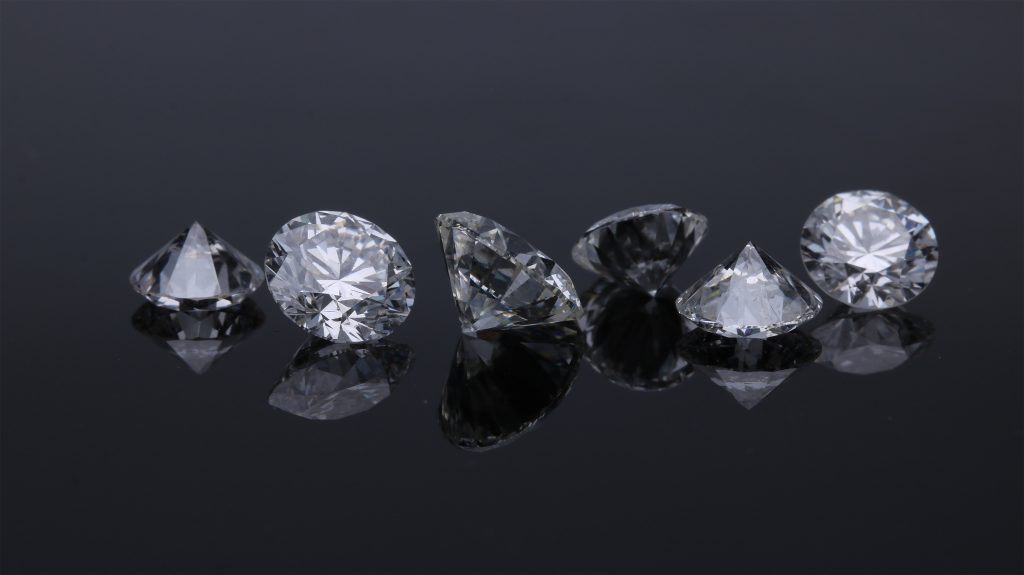The Rarest Diamonds Are Now Brown?
David Anderson found a 3.29-carat brown diamond with a light caramel color and octahedron shape at The Crater of Diamonds State Park in Murfreesboro, Arkansas.
This article is more than 2 years old

The Crater of Diamonds State Park in Murfreesboro, Arkansas is one of the few places in the world where visitors can search for real diamonds and keep or sell their finds. On March 4, frequent park visitor David Anderson found a 3.29-carat brown diamond with a light caramel color and octahedron shape. It is the largest diamond found at the park since 2021 when a visitor from California found a 4.38-carat yellow diamond.
“Mr. Anderson’s diamond is about the size of an English pea,” said Park Interpreter Tayler Markham. “It has a metallic shine typical of all diamonds found at the park, with a partially resorbed surface and lots of inclusions.” While brown diamonds may be rare in some areas, they’re one of the most common colors found at Crater of Diamonds State Park, ranking second after white and above the third most common hue, yellow.
The inclusions Markham mentioned are essentially flaws caused by the pressure and high temperatures the stones are exposed to deep inside the earth’s mantle. Very few diamonds lack internal or external inclusions, but the ones free of these signature markings are sold as “flawless” on the clarity scale. The inclusions in the Arkansas brown diamond are neither good nor bad, but whether they are desirable will influence the gem’s value.
In the park’s press release about the find, Markham said that every diamond found at Crater of Diamonds State Park had been partially absorbed during the eruption that launched them to the surface. “Magma in volcanic pipe melted the diamonds’ outer surfaces and gave them smooth, rounded edges. Larger diamonds like Mr. Anderson’s may have rough areas on the surface, but you can still find signs of resorption on the corners and edges.”
Anderson, who spotted the brown diamond while sifting soil from the park’s West Drain area, seemed surprised to have found the stone. “At first I thought it was quartz but wondered why it was so shiny,” he said. “Once I picked it up, I realized it was a diamond!”
The Murfreesboro resident has learned quite a lot about gems during the 16 years he has been searching for them at Crater of Diamonds State Park. He first heard about the unique park—which is an eroded volcanic crater—while watching The Travel Channel in 2007. To date, Anderson has found more than 400 diamonds at the park, including 15 that topped the scales at more than one carat.
Anderson’s other top finds include a 3.83-carat yellow diamond he found in December 2011 and a whopping 6.19-carat white diamond uncovered in April 2014. He said he plans to sell the brown diamond, which he named the Big, Ugly Diamond, or B.U.D. for short. Brown diamond jewelry has recently become popular, as the gems come in a wide range of warm, sparkly earth tones including champagne, cognac, and dark chocolate.
Visitors typically find one or two diamonds every day at Crater of Diamonds State Park. The location only became an Arkansas state park in 1972, but USAToday shared that more than 75,000 diamonds have been found there since 1906. The largest diamond ever discovered in the United States was found at the park in 1924, a 40.23-carat white diamond with a pink hue nicknamed “Uncle Sam.”
While finding a brown diamond at the park is not exactly a rare experience, it is an exciting one. Amateur miners like Anderson have also found amethyst, jasper, agate, quartz, and garnet stones at the park, which they are also allowed to keep or sell. The park provides complimentary instruction on diamond mining and provides free identification of found gems.



